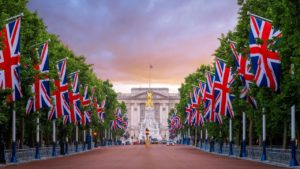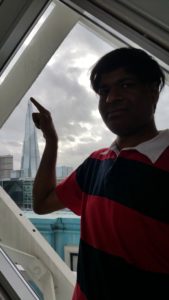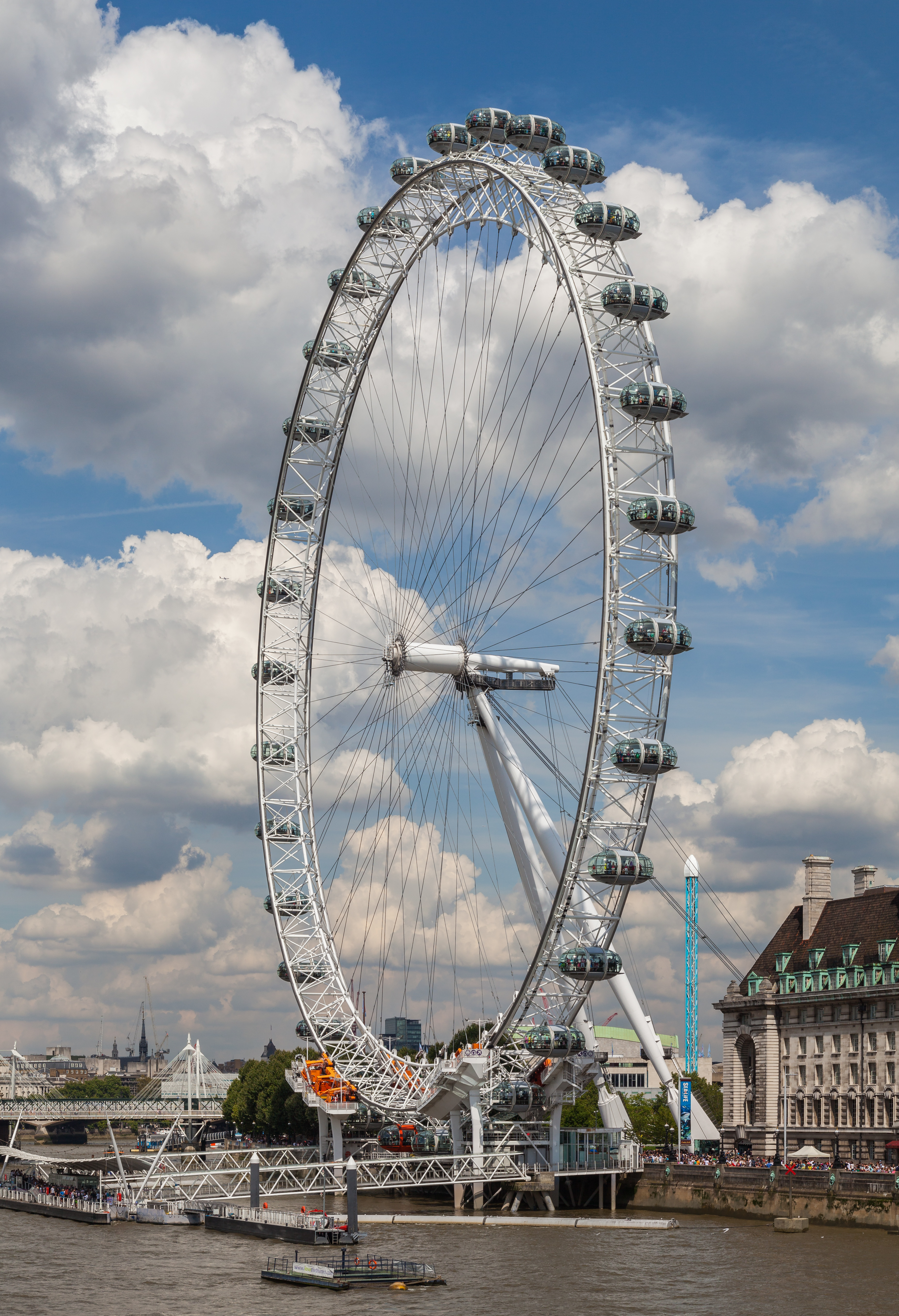
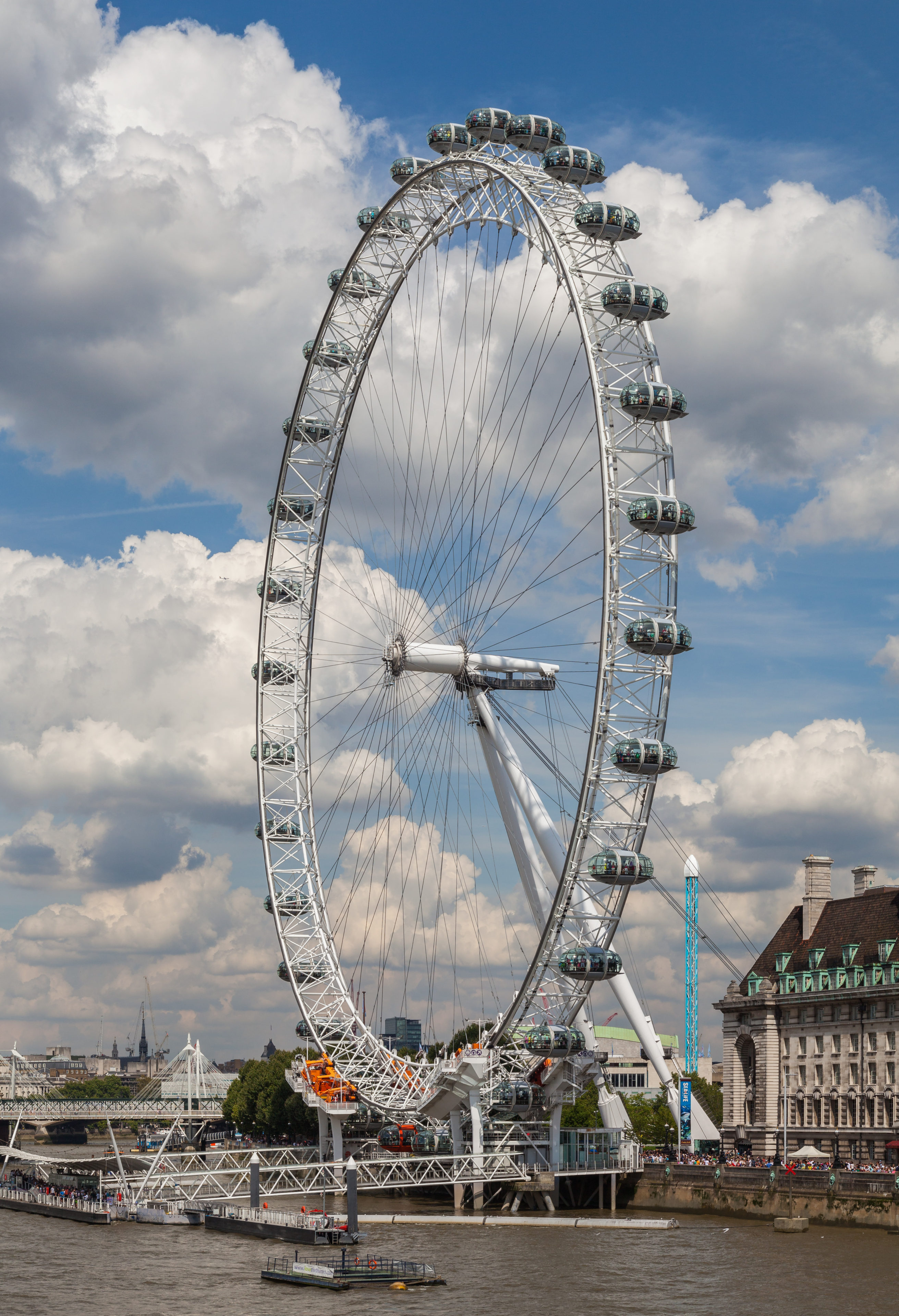
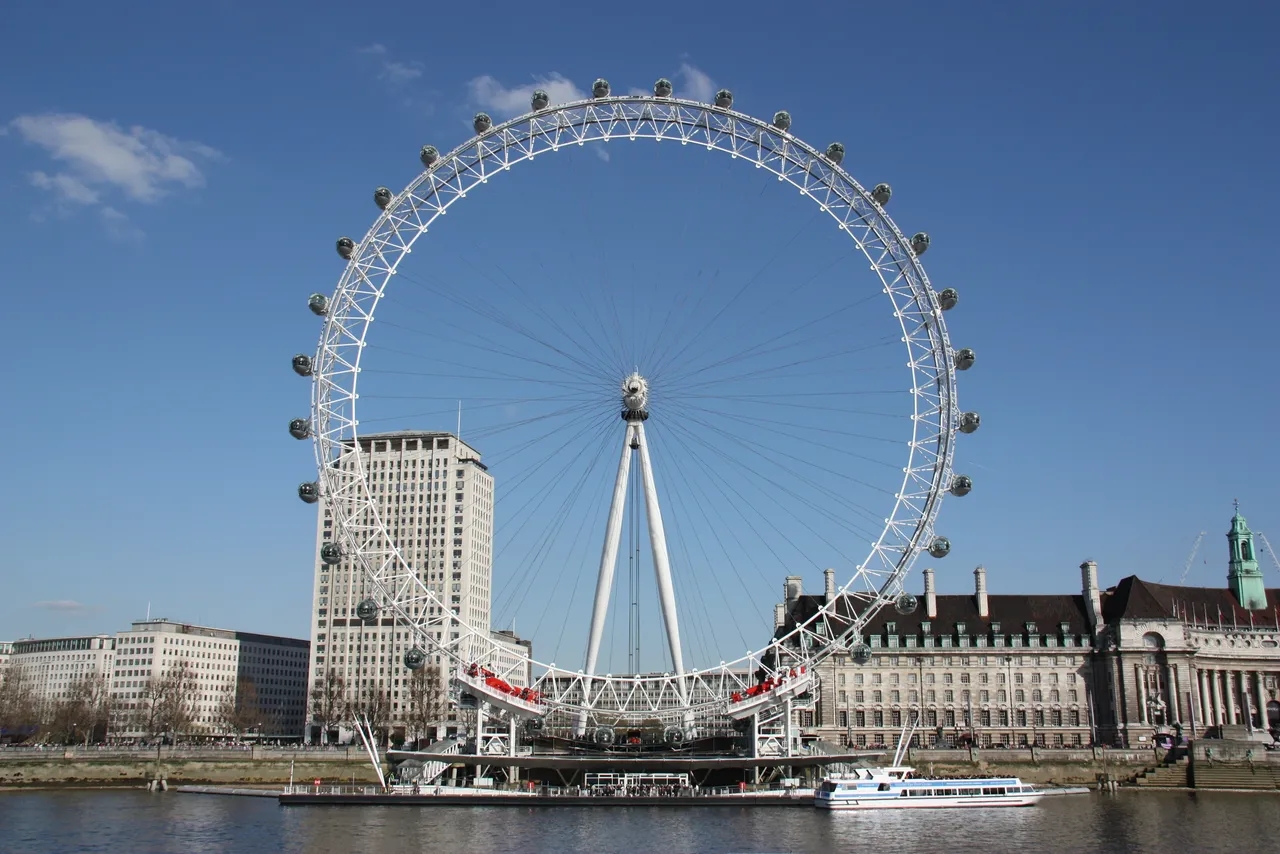
The London Eye is a cantilevered observation wheel on the South Bank of the River Thames in London. It is Europe’s tallest cantilevered observation wheel and is the most popular paid tourist attraction in the United Kingdom
THE LONDON EYE : VIEW FROM HELICOPTER
THE LONDON EYE : VIEW FROM RIVER THAMES
THE LONDON EYE : VIEW FROM ACROSS THE RIVER THAMES
THE LONDON EYE : VIEW FROM ACROSS THE RIVER THAMES
What is the London Eye ?
- The London Eye is a cantilevered observation wheel on the South Bank of the River Thames in London
- It is Europe’s tallest cantilevered observation wheel and is the most popular paid tourist attraction in the United Kingdom
How is London Eye the World¨s tallest Cantilevered observation wheel ?
- The structure is 135 metres tall and the wheel has a diameter of 120 metres
- When it opened to the public in 2000 it was the world’s tallest Ferris wheel
- Its height was surpassed by the 160 m Star of Nanchang in 2006, the 165 metres Singapore Flyer in 2008, and the 167.6 m High Roller (Las Vegas) in 2014
- Supported by an A-frame on one side only, unlike the taller Nanchang and Singapore wheels, the Eye is described by its operators as “the world’s tallest cantilevered observation wheel”
Describe the capsules of the London Eye
- The structure is 135 metres tall and the wheel has a diameter of 120 metres Each of the 32 sealed air-conditioned ovoidal capsules weighs 10 tonnes and can carry 25 people designed and supplied by Poma, are attached to the external circumference of the wheel and rotated by electric motors
- The capsules are numbered from 1 to 33, excluding number 13 for superstitious reasons.Each of the 10-tonne capsules represents one of the London Boroughs and holds up to 25 people who are free to walk around inside the capsule, though seating is provided
- The wheel rotates at 26 cm per second (about 0.9 kph or 0.6 mph) so that one revolution takes about 30 minutes
- It does not usually stop to take on passengers; the rotation rate is slow enough to allow passengers to walk on and off the moving capsules at ground level.It is, however, stopped to allow disabled or elderly passengers time to embark and disembark safely
- In 2009 the first stage of a £12.5 million capsule upgrade began
- Each capsule was taken down and floated down the river to Tilbury Docks in Essex
- On 2 June 2013 a passenger capsule was named the Coronation Capsule to mark the sixtieth anniversary of the coronation of Queen Elizabeth II
Describe the ownership & branding of the London Eye
- Marks Barfield (the lead architects), The Tussauds Group, and British Airways were the original owners of the London Eye
- Tussauds bought out British Airways in 2005 and then Marks Barfield in 2006 to become sole owner
- In May 2007, the Blackstone Group purchased The Tussauds Group which was then the owner of the Eye; Tussauds was merged with Blackstone’s Merlin Entertainments and disappeared as an entity
- British Airways continued its brand association, but from the beginning of 2008 the name British Airways was dropped from the logo
- On 12 August 2009, the London Eye saw another rebrand, this time being called “The Merlin Entertainments London Eye” to showcase Merlin Entertainments’ ownership
- A new logo was designed for the attraction—this time taking the form of an eye made out of London’s famous landmarks
- This coincided with the launch of Merlin Entertainments 4D Experience preflight show underneath the ticket centre in County Hall
- The refurbished ticket hall and 4D cinema experience were designed by architect Kay Elliott working with Merlin Studios project designer Craig Sciba
- Merlin Studios later appointed Simex-Iwerks as the 4D theatre hardware specialists
- The film was written and directed by 3D director Julian Napier and 3D produced by Phil Streather
- In September 2014, Coca-Cola signed an agreement to sponsor the London Eye for two years, starting from January 2015
- On the day of the announcement, the London Eye was lit in red
FINANCIAL DIFFICULTIES
- On 20 May 2005, there were reports of a leaked letter showing that the South Bank Centre (SBC)—owners of part of the land on which the struts of the Eye are located—had served a notice to quit on the attraction along with a demand for an increase in rent from £64,000 per year to £2.5 million, which the operators rejected as unaffordable
- On 25 May 2005, London mayor Ken Livingstone vowed that the landmark would remain in London
- He also pledged that if the dispute was not resolved he would use his powers to ask the London Development Agency to issue a compulsory purchase order
- The land in question is a small part of the Jubilee Gardens, which was given to the SBC for £1 when the Greater London Council was broken up
- The South Bank Centre and the British Airways London Eye agreed on a 25-year lease on 8 February 2006 after a judicial review over the rent dispute
- The lease agreement meant that the South Bank Centre, a publicly funded charity, would receive at least £500,000 a year from the attraction, the status of which is secured for the foreseeable future
- Tussauds also announced the acquisition of the entire one-third interests of British Airways and Marks Barfield in the Eye as well as the outstanding debt to BA
- These agreements gave Tussauds 100% ownership and resolved the debt from the Eye’s construction loan from British Airways, which stood at more than £150 million by mid-2005 and had been charging an interest rate of 25% per annum
